





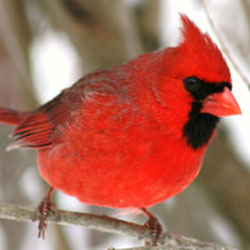
Create the perfect wildlife oasis with shrubs and trees that not only give birds an available food source but provide essential shelter during winter. Plant a variety of seed-, nut-, and berry-bearing plants that you -- and the birds -- are sure to enjoy year-round.
Barberry Berberis thunbergii
These thorny, deciduous shrubs bear bright red berries in fall and winter. Some varieties have bronze or golden foliage.
Learn more about barberry.
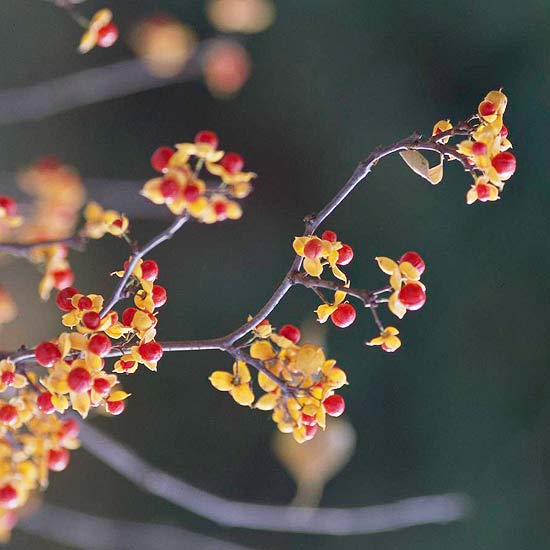 Bittersweet
Bittersweet
Bittersweet Celastrus scandens
This deciduous vine can can climb 20 feet or more. The tiny orange fruits split in fall to reveal scarlet seeds inside.
Learn how to attract hummingbirds to your garden.
Chokeberry Aronia arbutifolia
A deciduous shrub, Chokeberry bears clusters of white flowers in spring, burgundy fruits in fall.
Cotoneaster Cotoneaster species
This group includes both deciduous and broad-leaf evergreens. Most bear orange or red fruits in fall.
Learn more about cotoneaster.
Elderberry Sambucus species
This big, spreading decidious shrub bears showy, flat-topped clusters of white flowers followed by blue, red, or purple berries.
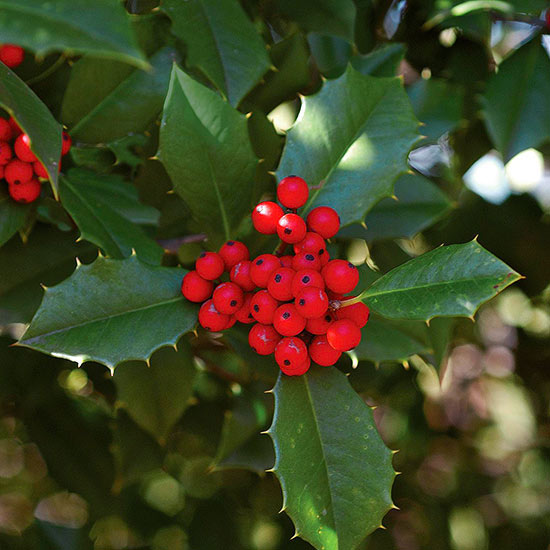 Holly
Holly
Holly Ilex species
Hollies can be evergreen or deciduous, trees or shrubs. Female plants bear red, yellow, or black berries, so long as a male pollinator is nearby.
Learn more about holly.
Firethorn Pyracantha species
The thorny, broad-leaf evergreens bear abundant red-orange fruits in fall and winter. Fragrant white flowers appear in spring.
Learn more about firethorn.
Rugosa Rose Rosa rugosa
Deciduous, prickly, and super-hardy, this rose's flowers are followed by seedy red fruits known as rose hips.
Sumac Rhus species
These deciduous or evergreen shrubs sucker to form colonies. Fruits appear in fall, often in showy clusters.
Learn more about sumac.
Viburnum Viburnum trilobum
A big deciduous shrub, it is adorned with white flower clusters in spring, abundant red fruits in fall.
Learn more about viburnum.
Boston Ivy or Virginia Creeper Parthenocissus species
This vigorous deciduous vine can climb 50 feet or more. Bluish-black berries appear in fall.
Learn more about Boston ivy.
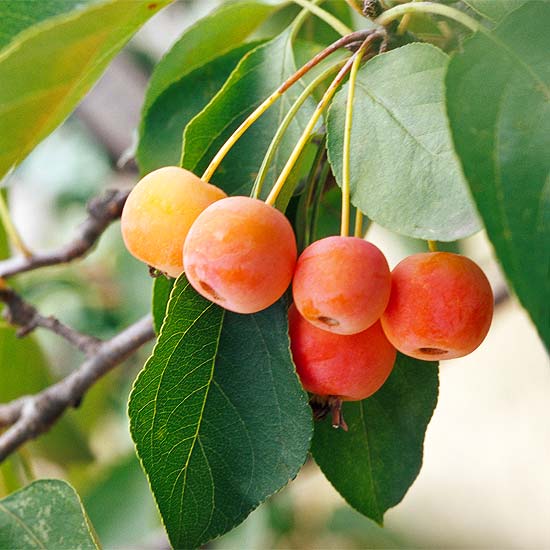 Crabapple
Crabapple
Crabapple Malus species
Many crabapple varieties are available with white, pink, or red flowers. For the birds, choose a small-fruited variety.
Learn more about crabapples.
Cherry Prunus species
Showy flowers in spring are followed by small fruits that are often inconspicuous. Many types are available.
Learn more about flowering cherries.
Dogwood Cornus species
Dogwood is a spring-blooming tree or shrub. The fruits of many species are ornamental, especially those of eastern and Kousa dogwoods.
Learn more about dogwood trees.
Hackberry Celtis occidentalis
A tall shade tree that tolerates difficult growing conditions, it bears fleshy seeds in fall.
Learn more about hackberry.
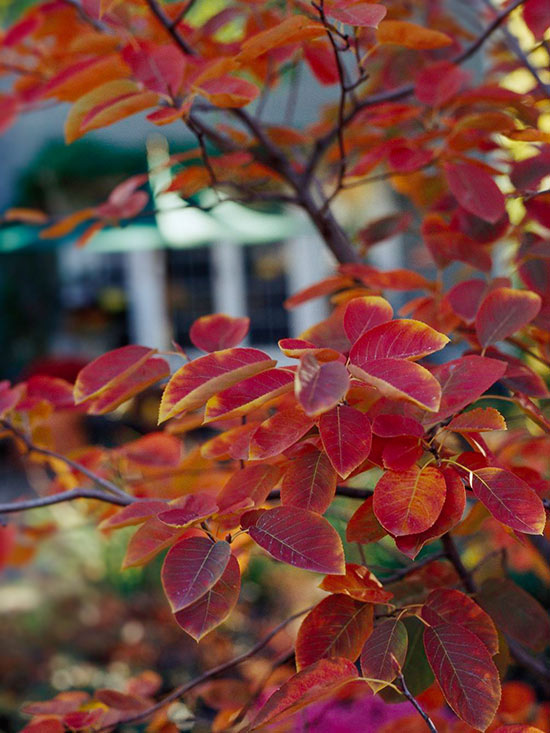 Serviceberry
Serviceberry
Hawthorn Crataegus species
These picturesque, multitrunked trees with thorny limbs display profuse red fruits followed by white flowers.
Learn more about hawthorn.
Locust Robinia species
The black locust and its relatives are large shade trees that bear beanlike seedpods. The pods persist into winter.
Learn more about locust.
Mountain Ash Sorbus species
The berries, usually red or orange, ripen in late summer and fall. This tree is not a good choice where summers are hot.
Pear Pyrus communis
This group includes the culinary pear and its ornamental relatives, such as the ubiquitous Bradford. All bloom in spring and bear fruit in summer.
Learn more about pear.
Russian Olive Elaeagnus angustifolia
The fruits on this tree appear in summer and resemble miniature olives. It is intolerant of humid summers and mild winters.
Serviceberry Amelanchier species
Birds quickly strip these small, graceful trees of the early-summer fruits. White flowers bloom in spring.
Learn more about serviceberry.
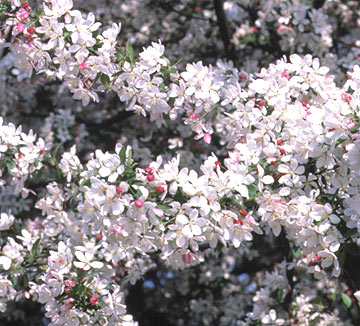
Crabapple Malus species Many varieties are available with white, pink, or red flowers. For the birds, choose a small-fruited variety.
Cherry Prunus species Showy flowers in spring are followed by small fruits that are often inconspicuous. Many types are available.
Dogwood Cornus species Spring-blooming trees or shrubs. The fruits of many species are ornamental, especially those of eastern and kousa dogwoods.
Hackberry Celtis occidentalis A tall shade tree that tolerates difficult growing conditions. Bears fleshy seeds in fall.
Hawthorne Crataegus species Picturesque, multi-trunked trees with thorny limbs. Profuse red fruits follow white flowers.
Locust Robinia species The black locust and its relatives are large shade trees that bear beanlike seed pods. The pods persist into winter.
Mountain Ash Sorbus species The berries, usually red or orange, ripen in late summer and fall. Not a good choice where summers are hot.
Pear Pyrus communis This group includes the culinary pear and its ornamental relatives, such as the ubiquitous Bradford. All bloom in spring, fruit in summer.
Russian Olive Elaeagnus angustifolia The fruits appear in summer and resemble miniature olives. Intolerant of humid summers and mild winters.
Serviceberry Amelanchier species Birds quickly strip these small, graceful trees of the early-summer fruits. White flowers in spring.
Copyright © www.100flowers.win Botanic Garden All Rights Reserved